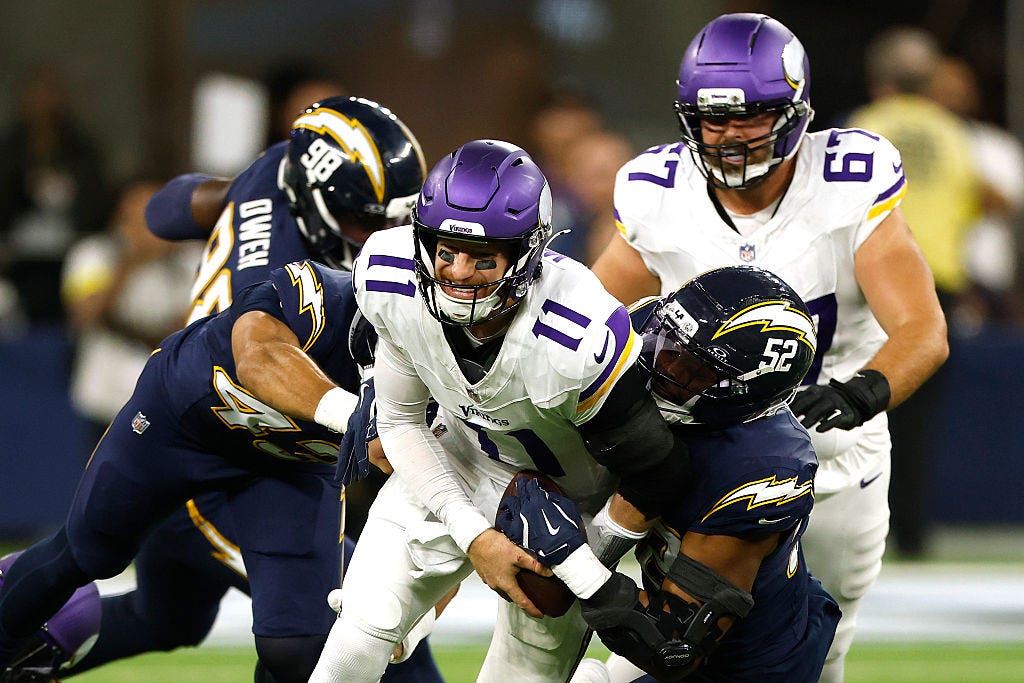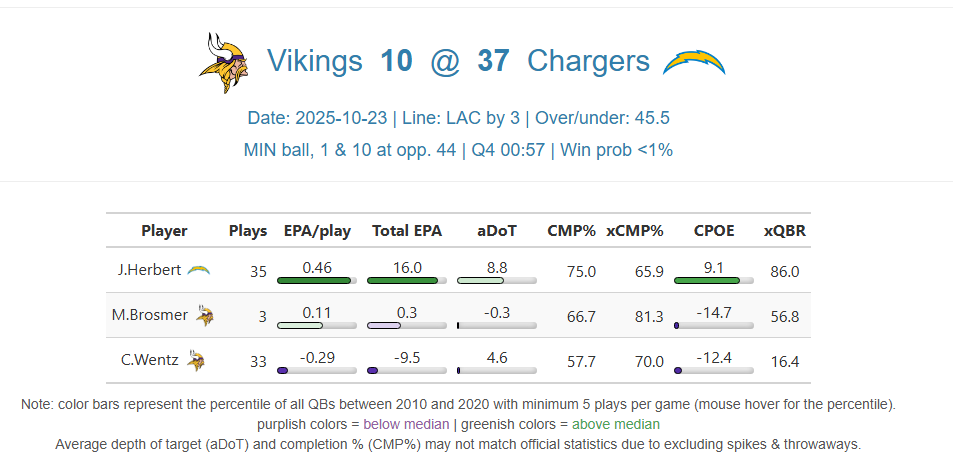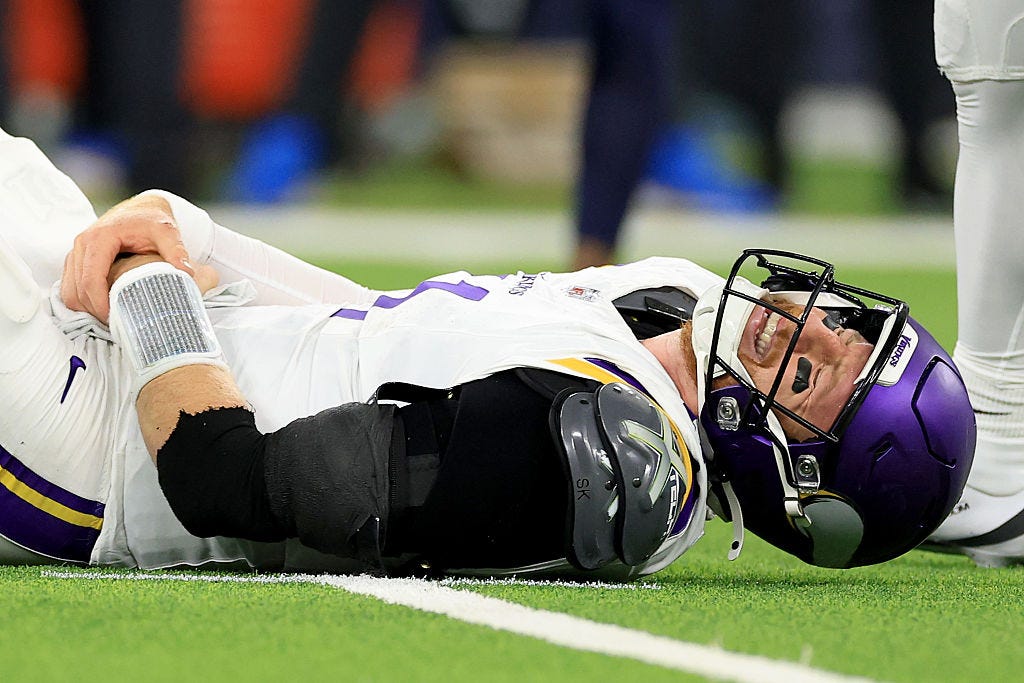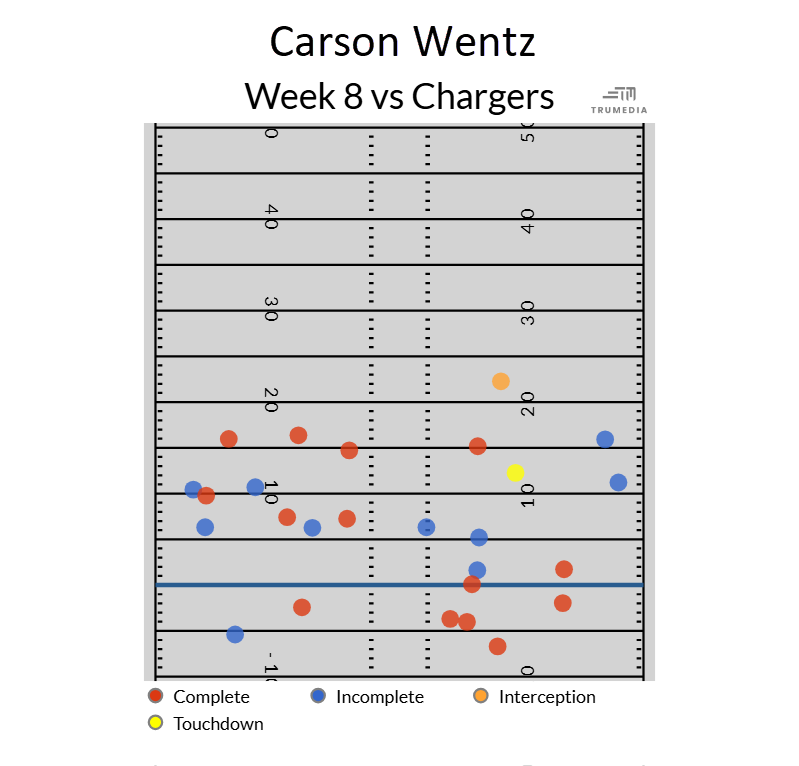The Vikings Disintegrated Before Our Eyes
On national television, the Vikings simulated playing a football game. Unfortunately, the Chargers actually played one. It was embarrassing.
The Minnesota Vikings disassembled themselves on national television against the Los Angeles Chargers on Thursday Night Football. The 34-10 loss doesn’t mathematically eliminate the 3-4 Minnesota Vikings, but the season has hit a sour note, and it’s difficult to envision anything resembling success coming from the Vikings in the second half of the season.
It is, of course, possible for the Vikings to turn things around. But a lot needs to change if they want to make any attempt that resembles a reasonable shot at instilling hope in the fanbase.
Their Thursday Night performance was an unserious effort at playing football, one that felt over at the top of the fourth quarter when the Chargers concluded a nearly seven-minute drive to score and put the game away, 31-10.
The electric feeling following the Week 1 comeback win against the Chicago Bears has receded into a faded memory, more a buzz amidst brain fog than any kind of jumpstart to the season.
What Happened?
It’s difficult to find players who played well. Certainly, many players didn’t play poorly, but few played well.
On offense, the primary blame falls on Carson Wentz, a quarterback disadvantaged by injury, a short week and a gradually disintegrating offensive line.
Typically, one points to mitigating factors, such as the supporting cast or an injury, to soften criticism. To provide sympathy, context and provide a nuanced take.
But it’s difficult to extend consideration to Wentz for these genuine obstacles to good play. Nevertheless, these items warrant discussion before discussing the player himself.
The Vikings entered the game starting Christian Darrisaw at left tackle after pregame workouts cleared him to play, with backup swing tackle Justin Skule on the right side of the line. After the second drive, Darrisaw was replaced by Skule and Walter Rouse filled in at right tackle. Before Rouse played a snap, Wentz had already been dealing with a 50.0 percent pressure rate on dropbacks.
Throughout the game, Wentz had been suffering from extraordinary shoulder pain. His harness was so unique that it earned commentary from sideline reporters and after-game media. His in-game grimacing after contact was expressive.
Very often, Wentz was pressured early and that pressure spiked his pain. It is difficult to perform well in an environment where defenders arrive near-immediately in the pocket.
On top of that, and well worth a more detailed discussion, the gameplan didn’t seem to do much to cover for the Vikings’ offensive issues and instead magnified Wentz’s weaknesses.
All of these provide context for Wentz’s performance, but all they do is give him a friendly curve to be graded on.
He still failed.
Wentz regularly locked on to receivers, keeping his eyes glued to his first read throughout the play. It seemed as if he had forgotten how to read defenses as a whole and instead waited for receivers to get open before throwing the ball. Not only did he decline to anticipate most of his throws, he signaled to the defense where he was going to go with the ball. At the same time, receivers later in the progression were getting open, just to be ignored.
Locking on to single receivers instead of reading the field also meant he held on to the ball too long. On pressured snaps, he held on to the ball for 3.67 seconds. On all snaps, he held on to the ball 3.08 seconds per dropback — his longest time to throw this year.
He responded particularly poorly to quick pressures. While the pressures weren’t necessarily his fault, he owns his response to them. On four quick hurries, he took sacks. All four of those sacks occurred after the 3.45-second mark, meaning he took on pressure, scrambled around and could not find a way to get rid of the ball in time.
The other two quick pressures were incompletions. The first one is understandable; had Wentz not scrambled away from Derwin James to create room to throw the ball away, it would have been a disaster.
The other incompletion was the Tarheeb Still blitz that seemingly reaggravated his shoulder. Bullets were flying, but the inability to find a throwing lane could have led to a disastrous pick.
These faults could, in theory, be overcome with unerring accuracy. But Wentz wasn’t that, either. While a sub-60 percent completion rate isn’t the best measure of inaccuracy, there’s nothing that tells us the typical weaknesses of completion rate are present. There was one drop, from Ben Yurosek, and one contested target.
Had this been a deep-ball offense, a sub-60 percent completion rate could produce an efficient, if volatile quarterback. But Wentz only threw the ball 4.6 yards downfield — a 4th percentile mark (in other words, 96 percent of individual quarterback games featured passers who threw deeper downfield than Wentz did in this game).
That short passing game should mean a higher completion rate. But that’s not what happened. The Next Gen Stats cataloguing of Wentz’s passes — how deep downfield they are, how close the target was to the sideline, the nearness of coverage defenders and the pressure the quarterback experienced on the play — has produced an expected completion rate of 65.9 percent. Throwing ten percentage points below that rate is pitiful.
His throws into tight windows could have produced another interception, and his short throws — like the very first one, to Aaron Jones, behind the line of scrimmage — were so far off the mark that they stalled the offense from the get-go.
Wentz battled through incredible pain to turn in this performance. The Vikings probably shouldn’t have had him do that. It didn’t do any good and they had a healthy quarterback, as unseasoned as he may be, waiting in the wings. Max Brosmer might not have been any better, but he would have been healthier.
Playcalling and Gameplanning
This was, surprisingly, one of the more baffling playcalling outings for a Kevin O’Connell offense. Though there were short options and Wentz created many of his own issues by holding on to the ball longer than he should have, the offense also didn’t provide many quick-strike options by the play’s design.
Keep reading with a 7-day free trial
Subscribe to Wide Left to keep reading this post and get 7 days of free access to the full post archives.







